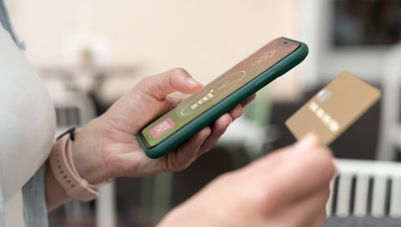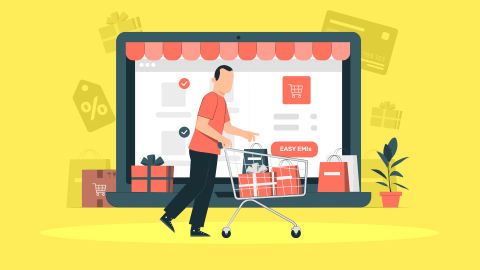If you have ever taken a loan or considered purchasing something expensive, you have likely come across the term EMI. EMI stands for Equated Monthly Instalment, which refers to the fixed sum you pay every month to clear a loan or purchase. Each instalment includes a portion of the principal along with the interest, ensuring that repayment is spread out over time rather than in one go. Whether it’s a home loan, personal loan, car loan, or even buying electronics, EMIs make these costs far more manageable. This article explains what EMI is, how it is calculated, and how solutions like the Bajaj Finserv Insta EMI Card bring flexible and convenient shopping options..
What is EMI?
EMI stands for Equated Monthly Instalment. It’s the fixed amount you pay every month to repay a loan or a purchase. This amount includes both the principal (the original amount you borrowed) and the interest (the extra cost charged by the lender).
You usually pay EMIs on:
- Online Shopping
- Home loans
- Personal loans
- Car or bike loans
- Education loans
- Consumer durables (like phones, laptops, TVs, etc.)
Thanks to EMI plans, you can enjoy a product or service immediately and pay for it gradually.
Check also: Advantages and disadvantages of Insta EMI Card
How does EMI work?
When you opt for an EMI, the lender divides the total amount you owe into monthly payments. These payments are scheduled over a fixed tenure (which could be 3 months, 6 months, 12 months, or more). Each EMI includes:
- A portion of the principal
- A portion of the interest
At the beginning of your repayment, a higher portion of your EMI goes towards interest. Over time, a larger portion goes toward the principal. This is known as amortization.
Example of how EMI is calculated
Let’s say you buy a washing machine worth Rs. 24,000 using EMI over 12 months with an interest rate of 10% per year. Your EMI will include both:
- A part of the Rs. 24,000 (principal)
- The interest charged by the lender
This way, instead of paying Rs. 24,000 upfront, you can pay a fixed amount every month—say Rs. 2,112—until the total amount is paid off.
Check also: Advantages and disadvantages of EMI payments
Types of EMI plans
There are two main types of EMI plans:
1. Standard EMI (with interest)
This is the most common EMI plan. It includes both principal and interest. The interest rate depends on your credit score, the lender’s terms, and the type of loan.
2. Easy EMI with the Bajaj Finserv Insta EMI Card
The Bajaj Finserv Insta EMI Card lets you split your purchases into easy EMIs with:
- No credit card reuired
Minimal or zero down payment
Flexible tenure options from 3 to 60 months
Over 1.5 lakh partner stores and 1 million+ products
Zero to low interest cost depending on the offer
With this card, you can shop for gadgets, appliances, furniture, lifestyle products, and even pay for travel tickets—all on easy EMIs.
How is EMI calculated?
EMIs are calculated using a formula based on:
- Principal amount (P)
Interest rate per month (r)
Loan/tenure in months (n)
EMI Formula:
EMI=P×r×(1+r)n(1+r)n−1EMI = \frac{P \times r \times (1 + r)^n}{(1 + r)^n - 1}EMI=(1+r)n−1P×r×(1+r)n
EMI calculation example:
Let’s assume:
Loan amount (P) = Rs. 50,000
Annual interest rate = 12%
Monthly interest rate (r) = 12 / (12 × 100) = 0.01
Tenure (n) = 12 months
Now plug these into the formula:
EMI=50000×0.01×(1+0.01)12(1+0.01)12−1≈Rs. 4,435EMI = \frac{50000 \times 0.01 \times (1 + 0.01)^{12}}{(1 + 0.01)^{12} - 1} \approx Rs. 4,435EMI=(1+0.01)12−150000×0.01×(1+0.01)12≈Rs. 4,435
So, you’ll pay around Rs. 4,435 every month for a year to repay Rs. 50,000. Use the Bajaj Finserv EMI Network Calculator for instant and accurate calculations.






